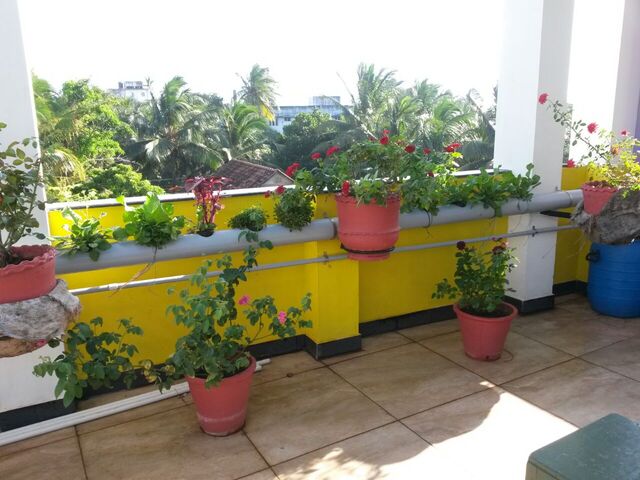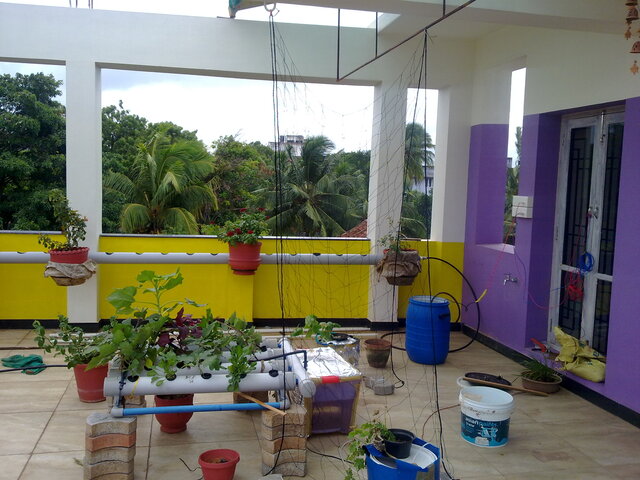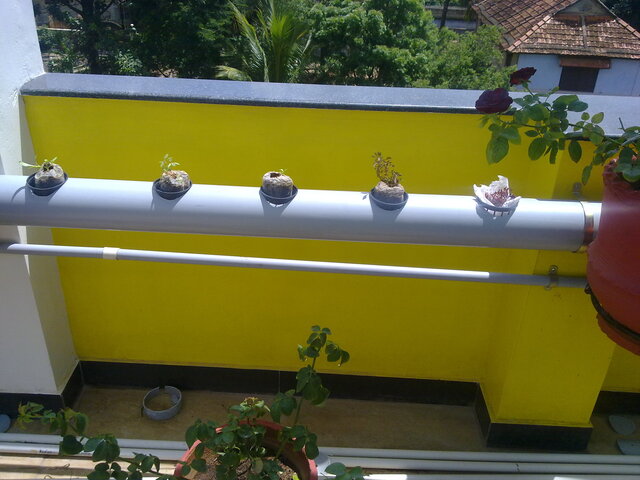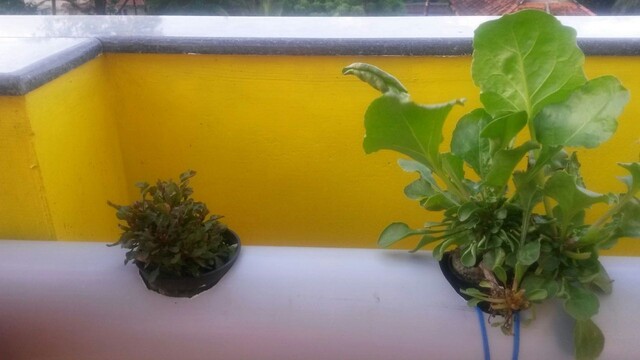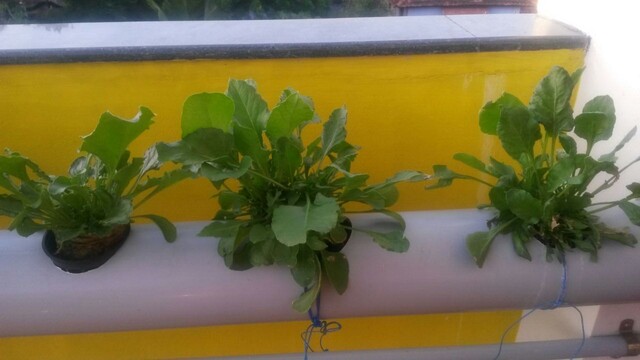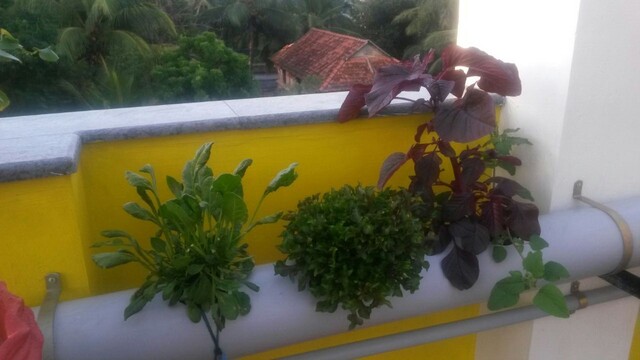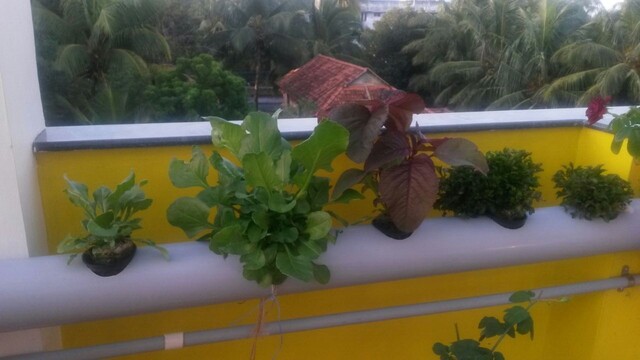Hydroponics Spinach NFT System
Published on
Tags: hydroponics, gardening, DIY
This post is to describe one particular system – growing spinach using Nutrient Film Technique (NFT). An NFT system consists of a pipe through which a nutrient solution is circulated. Holes are drilled in the top side of the pipe and net pots containing the plants are placed in it. The water level in the pipe is adjusted such that the net pot just touches the water solution. A reservoir stores the nutrient solution and a submersible pump circulates the nutrient solution throughout the system to oxygenate the solution and also supply nutrients.
Here are the things that were used:
- 6” PVC pipe, 15′ long
- ¾” PVC Pipe, 15′ long
- 2 End caps
- 1 Connectors
- 3 Elbow Joints
- 6 clamps, 12wall fissures & 12 screws
- 50 liter barrel
- 880 LPH, 1.2m head submersible pump(12W)
- 16mm dia Irrigation tube, 1m long
- 3” netpot – 15 nos and cocopeat germination plugs
- 500L Hydroponics spinach solution
- pH meter – Hanna instruments
- TDS meter – HM Digital Aquapro
Total Bill of Materials – Rs.4000 approx, excluding the pH meter and TDS meter which costs another Rs.2500 and is common for all systems.
Also, a drilling machine with appropriate hole saw set was used to drill holes.
The big 6 inch PVC pipe was clamped to the wall in a slightly slanted manner to make water flow. One end received input from the nutrient reservoir and the other end was connected to the a slightly slanted ¾ inch return pipe(PVC) that was connected back to the reservoir to return the nutrient solution. The 6" PVC pipe had holed drilled on top to place net pots with plants on it. I hired a plumber to do the job according to my requirements.
Figure 2: Setting up the system: Pipe clamped to wall, holes for placing net pots drilled drilled. Below is another NFT sytem described in one of the previous posts
The plants were germinated in cocopeat germination plugs and placed in netpots, which were in turn placed in holes drilled in the PVC pipe. The connector in the end cap was drilled such that the water level just touched the netpots. If too much of the netpot is submerged, then roots might decay and plants die. The submersible pump present in the 50 liter nutrient reservoir tank pumped water in the big pipe, which then flowed through the pipe and drained via the smaller pipe below into the reservoir. This is a critical thing, not just for supplying nutrients, but mainly for oxygenation of water. Roots need oxygen, else they will decay and plants will die. The nutrient concentration used was 400ppm initially and when the plants grew, the concentration was increased to 800ppm. The pH of the solution was maintained between 5.5-6.5. The water/nutrient topping up is done once every week.
I grew palak spinach, amaranthus and ponnangani keerai. This was the system in the first week:
Figure 3: Setting up the system: Pipe clamped to wall, holes for placing net pots drilled drilled. Below is another NFT sytem described in one of the previous posts
However, these were windy months(june-july) and most of the initial plants except ponnangani keerai were broken down due to high winds. I replaced them all with new plants. The winds subsided after the month of august and now there's healthy growth. The root health was average, with partially rotten roots, but enough healthy roots for the plant to grow. Below is the state of the system after 2 months:
The problem with this system is that it does not have much direct sunlight as it is shadowed by the beam of the building. It has good indirect sunlight and that seems enough to have a healthy growth. We harvest from this system few times per month. Perhaps another system with more sunlight can increase the production.
